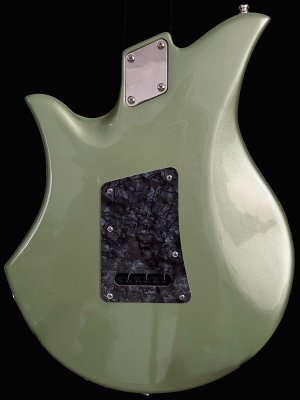NedRyerson
Senior Member
- Messages
- 862
Over the last few years as I've grown to pay closer attention to guitar building techniques, one thing that's stood out to me is the choice to cover the spring cavity or leave it open. I prefer a cover because from my first guitar onward, "that's what you do." I'm curious therefore what you all like for yourselves and also why.
I certainly understand the convenience of easy access if needing to adjust spring tension, but does one do that frequently enough to where having the cover becomes a hindrance? I suppose if I was a more skilled and experienced player who does incorporate the trem bridge (ignoring the pedantry that it's vibrato, not tremolo but unlike "route" vs. "rout" I've given up that hill. "Rout" is to remove wood; "route" is the direction you travel to get there...but I digress), then it would make sense to me to leave it open and adjust it frequently.
Is that the reason? Or is there something else advantageous or convenient to leaving it open that I'm not considering?
I certainly understand the convenience of easy access if needing to adjust spring tension, but does one do that frequently enough to where having the cover becomes a hindrance? I suppose if I was a more skilled and experienced player who does incorporate the trem bridge (ignoring the pedantry that it's vibrato, not tremolo but unlike "route" vs. "rout" I've given up that hill. "Rout" is to remove wood; "route" is the direction you travel to get there...but I digress), then it would make sense to me to leave it open and adjust it frequently.
Is that the reason? Or is there something else advantageous or convenient to leaving it open that I'm not considering?



